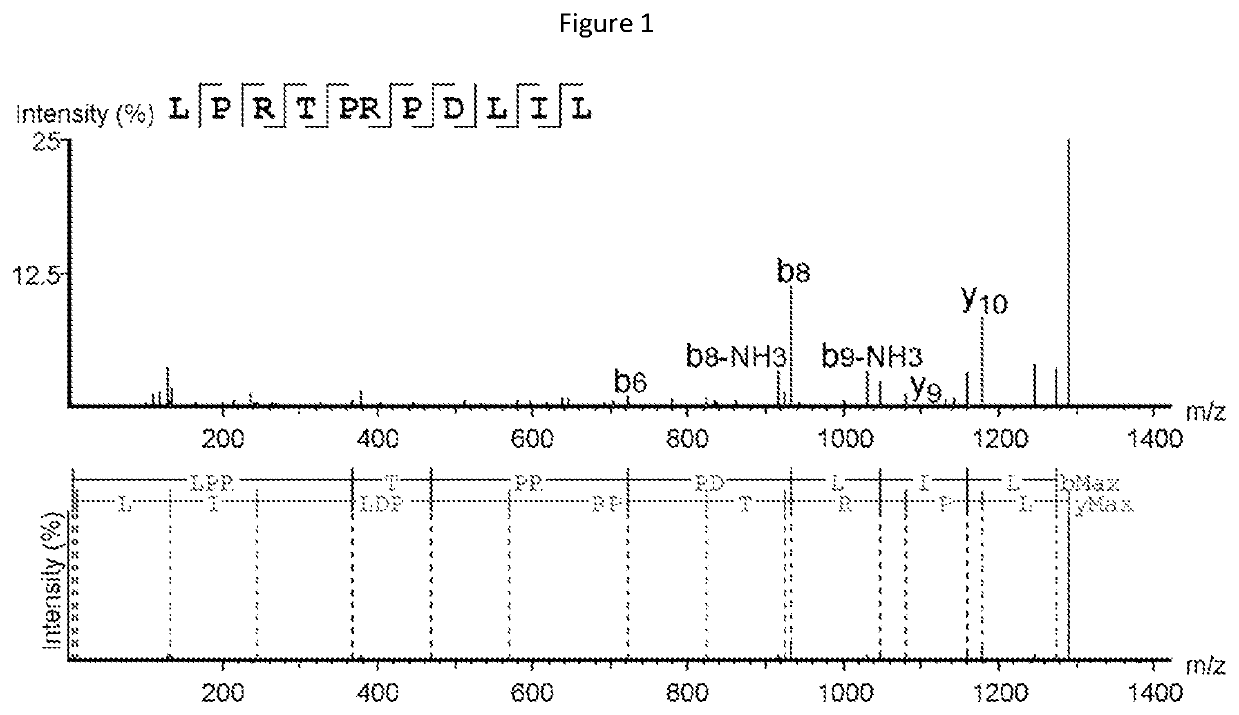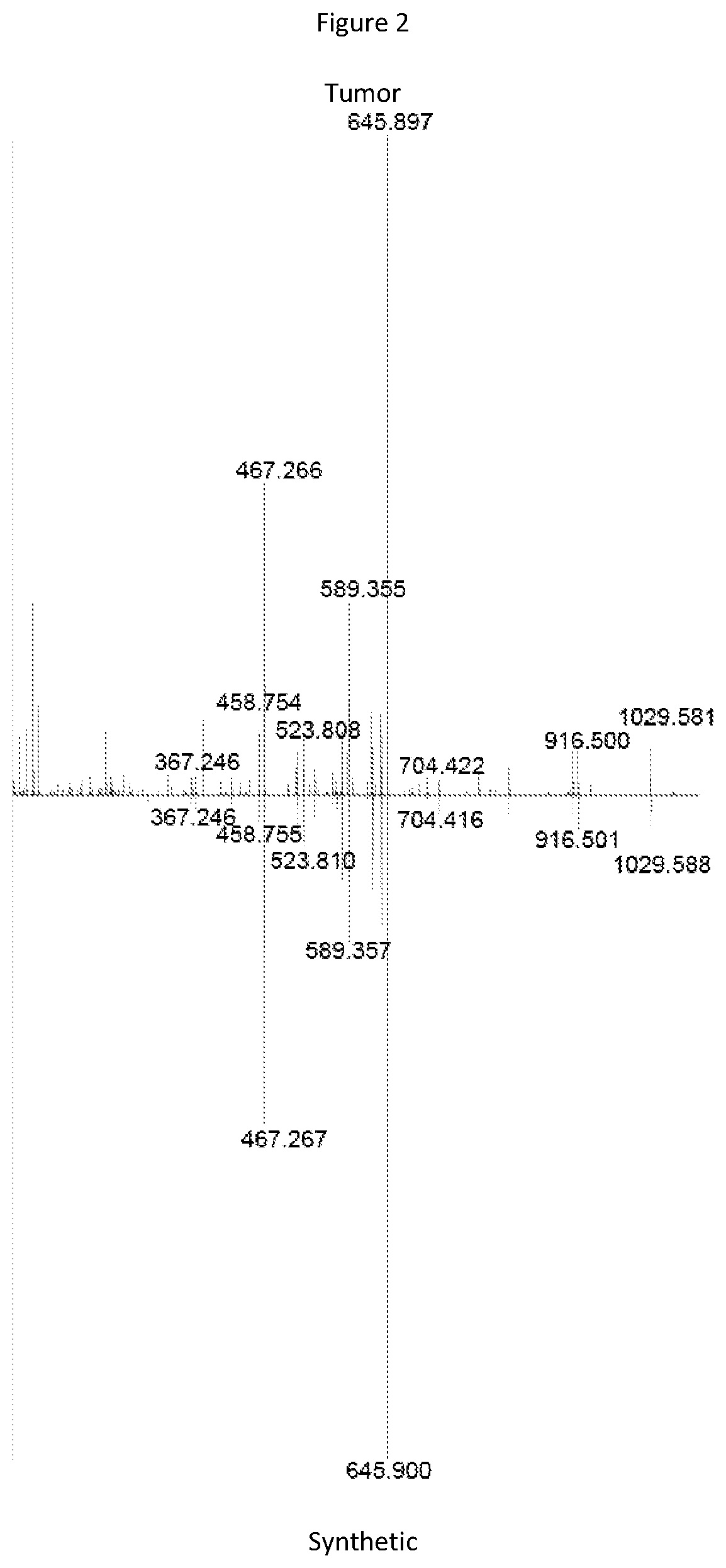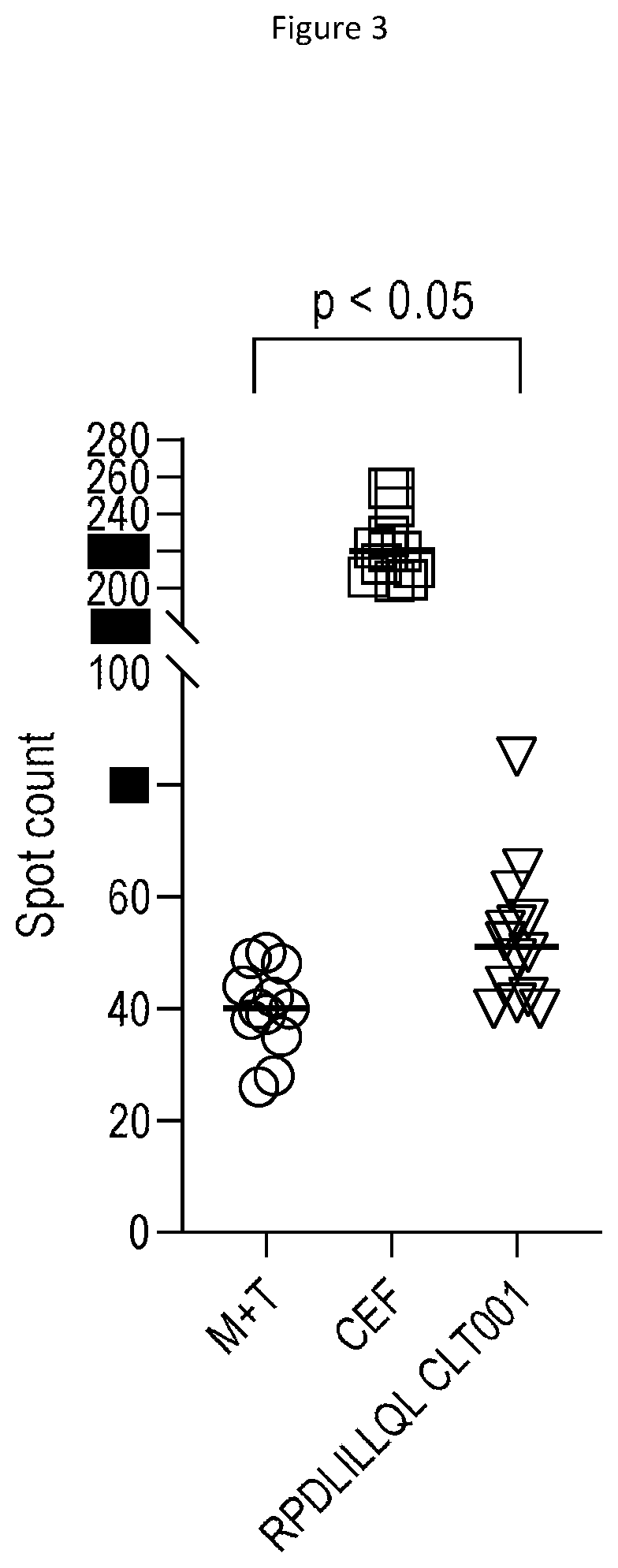Novel cancer antigens and methods
a cancer and antigen technology, applied in the field of antigenic polypeptides and corresponding polynucleotides, can solve problems such as restricted progress
- Summary
- Abstract
- Description
- Claims
- Application Information
AI Technical Summary
Benefits of technology
Problems solved by technology
Method used
Image
Examples
specific embodiments
[0271]In an embodiment, the CLT antigen polypeptide comprises or consists of SEQ ID NO. 1. Exemplary fragments comprise or consist of any one of SEQ ID NO. 2, SEQ ID NO. 5 and SEQ ID NO. 6. Exemplary nucleic acids encoding said polypeptide sequence comprise or consists of SEQ ID NO 3 or 4. Corresponding nucleic acids (e.g., DNA or RNA), T-cells, T-cell populations, cytocotic cells, antigen-binding polypeptides, antigen presenting cells and exosomes as described supra are provided. Said nucleic acids (e.g., DNA or RNA), T-cells, T-cell populations, cytotoxic cells, antigen-binding polypeptides, antigen presenting cells and exosomes may be used in the treatment of cancer especially melanoma e.g. cutaneous melanoma or uveal melanoma. Related methods of diagnosis are also provided.
example 1
ification
[0272]The objective was to identify cancer-specific transcripts that entirely or partially consist of LTR elements.
[0273]As a first step, we de novo assembled a comprehensive pan-cancer transcriptome. To achieve this, RNA-sequencing reads from 768 patient samples, obtained from The Cancer Genome Atlas (TCGA) consortium to represent a wide variety of cancer types (24 gender-balanced samples from each of 32 cancer types (31 primary and 1 metastatic melanoma); Table S1), were used for genome-guided assembly. The gender-balanced samples (excluding gender-specific tissues) were adapter and quality (Q20) trimmed and length filtered (both reads of the pair ≥35 nucleotides) using cutadapt (v1.13) (Marcel M., 2011, EMBnet J., 17:3) and kmer-normalized (k=20) using khmer (v2.0) (Crusoe et al., 2015, F1000Res., 4:900) for maximum and minimum depths of 200 and 3, respectively. Reads were mapped to GRCh38 using STAR (2.5.2b) with settings identical to those used across TCGA and passed t...
example 2
tidomic Analysis
[0279]Mass spectrometry (MS)-based immunopeptidomics analysis is a powerful technology that allows for the direct detection of specific peptides associated with HLA molecules (HLAp) and presented on the cell surface. The technique consists of affinity purification of the HLAp from biological samples such as cells or tissues by anti-HLA antibody capture. The isolated HLA molecules and bound peptides are then separated from each other and the eluted peptides are analyzed by nano-ultra performance liquid chromatography coupled to mass spectrometry (nUPLC-MS) (Freudenmann et al., 2018, Immunology 154(3):331-345). In the mass spectrometer, specific peptides of defined charge-to-mass ratio (m / z) are selected, isolated, fragmented, and then subjected to a second round of mass spectrometry (MS / MS) to reveal the m / z of the resulting fragment ions. The fragmentation spectra (MS / MS) can then be interrogated to precisely identify the amino acid sequence of the selected peptide t...
PUM
| Property | Measurement | Unit |
|---|---|---|
| Nucleic acid sequence | aaaaa | aaaaa |
| Immunogenicity | aaaaa | aaaaa |
Abstract
Description
Claims
Application Information
 Login to View More
Login to View More - R&D
- Intellectual Property
- Life Sciences
- Materials
- Tech Scout
- Unparalleled Data Quality
- Higher Quality Content
- 60% Fewer Hallucinations
Browse by: Latest US Patents, China's latest patents, Technical Efficacy Thesaurus, Application Domain, Technology Topic, Popular Technical Reports.
© 2025 PatSnap. All rights reserved.Legal|Privacy policy|Modern Slavery Act Transparency Statement|Sitemap|About US| Contact US: help@patsnap.com



